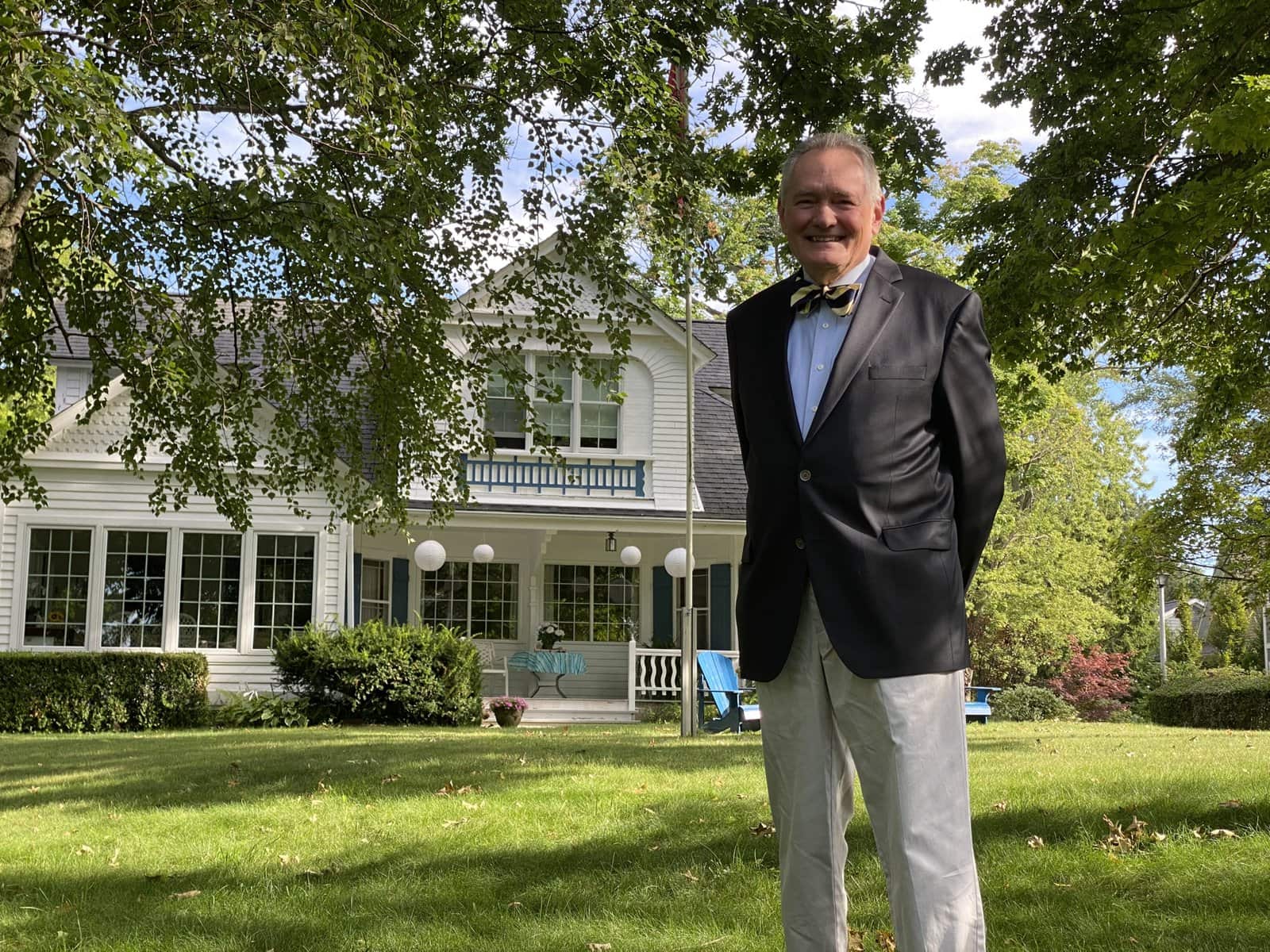Despite retiring from civic life after decades of community work in Niagara-on-the-Lake, Jim Collard knew he wasn’t quite done.
Born and bred in NOTL, he spent 30 years on town council, served on numerous community boards and committees, and helped fundraise for many projects over the decades, all while building a long career as a high school teacher in St. Catharines.
But while he wrote the final chapter in his long political career in 2018 (including one unsuccessful run for the lord mayor’s chair), he felt he still had more to contribute.
“I didn’t feel like I wanted to give it all up,” the 72-year-old says in an interview.
“I had been participating in my community for all those years, all that time trying to make a difference.”
Some people who grow up in small towns can’t wait to get out. But Collard always knew, “I never wanted to leave Niagara-on-the-Lake.”
Their children are all grown, and he and his wife Pat live in the house where he grew up in Chautauqua, though they spend part of their winters in warmer climes.
But whatever retirement gig Collard took on had to have a strong connection to Niagara.
He kept his eyes peeled for openings that interested him – maybe the bridge commission or Niagara Parks.
Then when fellow Tory and former MP Rob Nicholson stepped down as chair of the Niagara Escarpment Commission, Collard jumped at the opportunity.
He put his name forward and this past summer was appointed by cabinet as the new chair of the commission, a 17-member provincial agency that manages development on one of the most sensitive and important geographical features in southern Ontario.
The escarpment looms large over Niagara and is credited with helping to protect the region, a buffer from storms off Lake Erie.
It also ensures the moderate climate that is so crucial to fruit and grape growing. Plus a little less snow and shorter winters than some other areas of the province.
As well, there are many top-quality gravel quarries along the escarpment, including the now mined-out Queenston quarry.
And while it may be called the Niagara Escarpment, it is hundreds of kilometres long, stretching far afield from the region.
Designated as a UNESCO World Biosphere, it is considered one of the world’s most magnificent natural landforms.
“It actually starts in New York state,” Collard says.
“It continues to Queenston, then turns north and goes up to Tobermory, then it turns west again and goes into Wisconsin, and south again and ends up somewhere near Green Bay.”
In an era when defence of the province’s Greenbelt has become a huge political issue thanks to the Doug Ford government’s handling of that controversy, the escarpment commission, which was established by Premier Bill Davis in 1973, tries to strike a balance between environmental and development concerns.
About 1.4 million people live in cities, towns and villages between Queenston and Tobermory and the commission, with representatives from all those areas, strives to maintain that crucial balance, Collard says.
“Any property owner who lives in that area knows there are requirements for them if they want to make changes to their property. They have to come to us,” as well as their own municipality, he says.
“We have a team of planners who will look at all the permits that come in and and they will decide whether or not the (escarpment) act applies.”
If a proposal is a good fit, the planners have the power to simply approve it.
“About 98 per cent of the applications fit” and only about two per cent come to the commission’s board for adjudication, Collard says.
That’s a bit different than municipal councils, which “get to approve everything, good, bad and indifferent,” he says.
The commission has “a fabulous staff. They really care about what they do. They’re considerate of all of the options. And that’s a good thing for Ontario.”
Despite its geographical prominence, “if you don’t live in the escarpment, you may not even know it exists,” Collard says.
But that doesn’t diminish its importance and significance. And like the Greenbelt, people want it preserved.
Since his appointment, he’s heard from several people who, after offering their congratulations, “the next two words out of their mouths were, ‘Protect it.’ ”
That’s a mission he says he takes seriously, noting that without the commission’s oversight, changes would be up to each municipality along the escarpment and that could lead to a hodge-podge of all sorts of development.
“The commission is there to steer the ship and (its 17 members) have their hand on the tiller to make sure that the regulations and rules and the Niagara Escarpment Planning and Development Act are adhered to,” he says.
“We try to do the best we can. That’s it in a nutshell.”











